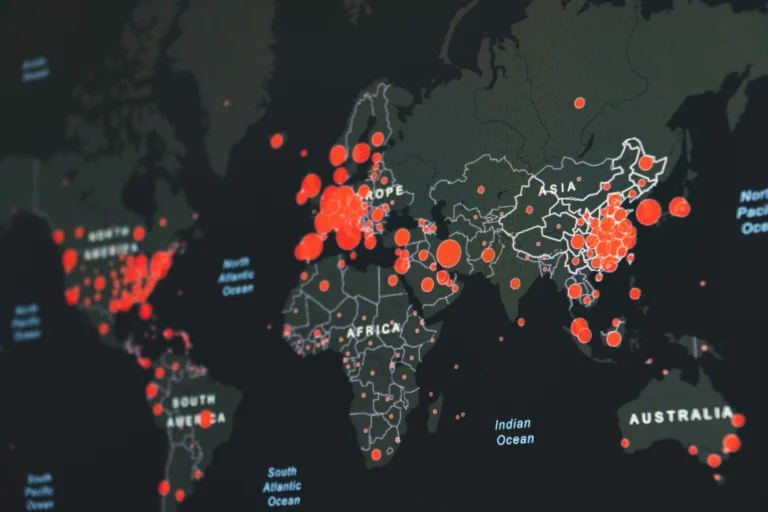With experience in both civil and common law systems of trademark protection, Mariya Ortynska helps clients in international trademark filings and managing global trademark portfolios. Ortynska Law operates on a flat fee structure, providing clients with a transparent cost estimate in advance.
Mariya is active in the international professional community: she regularly attends international conferences, such as INTA, ECTA, AIPPI, and others, and participates in Committees of global organizations. Such involvement and a developed network with IP attorneys from other countries helps Ortynska Law to effectively provide services in international intellectual property, including trademark and copyright law.
Consulting on Global Trademark Portfolio Protection
Ortynska Law offers strategic consulting services focused on optimizing trademark filing budgets, aligning business strategy with the necessary steps of brand protection. Based on extensive experience of the application of Berne Convention and other international copyright laws Mariya Ortynska consults business on different copyright nuances.
Madrid Protocol Filings
Mariya has experience in international trademark applications, coordination of answering office actions, and filing and answering oppositions in different jurisdictions. Ortynska Law pays attention to all necessary steps during international registration, international assignments, and maintenance as well.
Title
Description
Title
Description
Frequently Asked Questions
U.S. federal trademark registration does not cover any other countries. If you are selling goods or offering services outside the US, it is recommended to consider trademark registration in other countries as well. Also, if you are only planning to enter a foreign market, it is advised to conduct a trademark search to make sure that you would not violate the rights of third parties in foreign countries.
You can register a trademark by:
- Filing direct applications to Trademark Offices in countries you are interested in;
- Filing an international application under the Madrid Protocol and designating the countries you are interested in. Be aware that for designation in every country, you need to pay an additional international fee;
- Filing a regional trademark, for instance, the European Union Trademark, which covers 27 countries of the EU.
You can combine the paths mentioned above. For example, you can file an international application for designating Mexico, Canada, and Japan, and file a separate application for trademark registration in China.
Cost-effectiveness depends on various factors, particularly the number of countries you plan to claim and what these countries are. As a rule, if you are interested in trademarking in 3 or more countries, international registration is more cost-effective. It should also be noted that not in every case is an international application possible, as the latter is always based on the initial national registration. For example, if you have registered the trademark XYZ in the United States, you can file the same trademark under the international procedure. However, if you want to register a translation of trademark XYZ in Chinese in China, you cannot file an international application in this case, because the designation itself will be different in the United States and China.
As of today, 131 countries of the world are covered by the Madrid Protocol. The Madrid Protocol includes countries in Europe (e.g., Germany, France, Spain), North America (USA, Canada), Asia (China, Japan, South Korea), as well as Australia and many others.
Before entering the market of another country, it is advisable to conduct a trademark search and, based on its results, determine whether there are identical or similar trademarks in that country and whether there is a likelihood of infringement. A trademark search can be conducted in one or more countries of interest to you. It is important to remember that if you plan to enter the EU market, it is advisable to search for trademarks registered separately in EU countries (e.g., Germany, France, Portugal) and those registered as EU trademarks.
After you have filed the application for international registration, you can submit a request for territorial extension. For instance, if you registered a trademark in the U.S. in 2024, filed an international application claiming Germany, France, Canada, and the UK in 2025, then later this year or in the next years, you may submit a request for territorial extension and claim new countries (e.g., Japan, China) where you also plan to enter the market.
The international registration can be renewed every 10 years. Renewal is done by filing a renewal request and paying applicable fees. The fees are calculated based on the countries you claimed, with a basic fee that applies to all countries. Therefore, the total cost depends on the countries where the trademark is protected.
After filing an international application with the International Bureau of the World Intellectual Property Organization, the application undergoes a formal examination, and then WIPO sends information to each country you have applied for. The office of each country will consider your application separately and independently. If there are grounds for refusing to register a trademark in one country, this does not mean that you will be refused registration in other countries.
If you have received a preliminary refusal to register a trademark, consider asking a trademark attorney how to deal with it and what strategy to use. Trademark attorney Mariya Ortynska handles portfolios in different countries, has a network of trademark attorneys in other countries, and will help you coordinate the work and develop a strategy to overcome a preliminary refusal.
You can register a trademark in the EU by filing national applications to the countries of interest or by filing an EU TM. National applications and EU trademarks can be filed under the Madrid Protocol.
If your trademark has been registered by another person, a trademark lawyer will help you develop a further strategy depending on the situation. First of all, it is worth checking whether the trademark is only registered or both registered and used. If the trademark is not used for a certain period after registration (usually 3 or 5 years, depending on the country), you can file a cancellation action to terminate the trademark due to non-use.
If you are planning to enter the UK market today, you can only do so by filing a national application or by designating the UK in an international registration. It is currently not possible to register a trademark in the UK by filing an application for EU trademark registration.
If you use a trademark in other countries in English, in most cases, registration of a trademark in other languages is unnecessary, because the laws of most countries will recognize actions to register a trademark translated into another language by a third party as copyright infringement. However, if you are going to enter the market of another country with a different name, in particular, by translating or adapting your trademark into another language, it is advisable to register the TM.
According to the Berne Convention, which covers 181 countries, copyright is protected without registration and other formalities in most countries. The United States, which requires copyright registration before filing a lawsuit, is one of the few exceptions.
Therefore, for many countries, copyright registration is unnecessary. Moreover, in many countries, copyright registration is not required at all. Depending on your request, copyright attorney Mariya Ortynska will be able to advise whether copyright registration is necessary and possible in the countries you are interested in.


